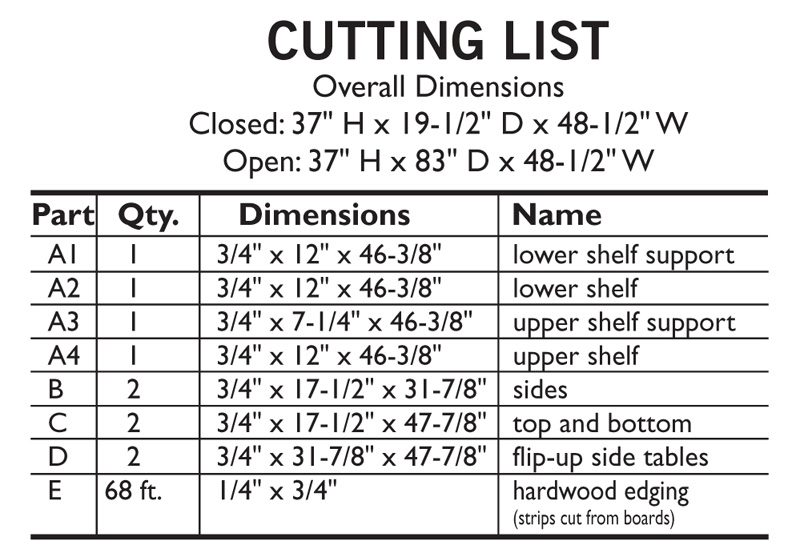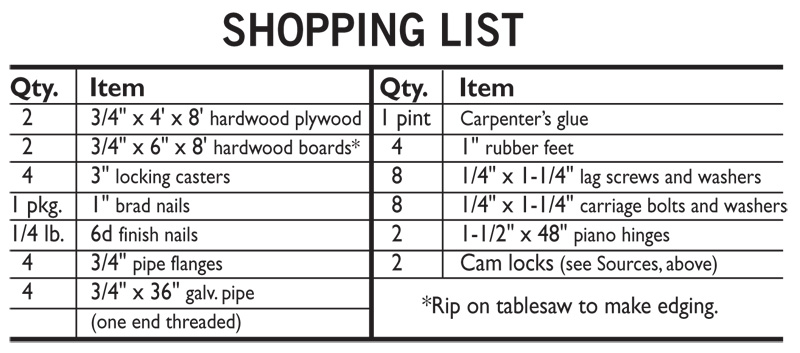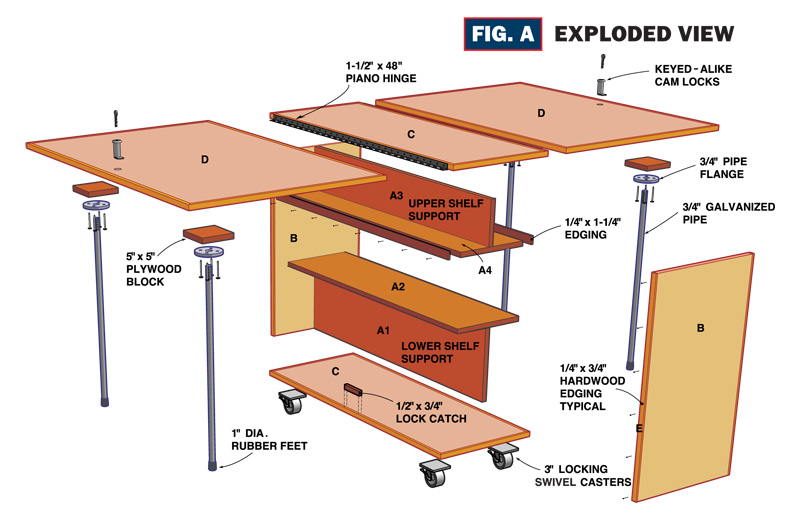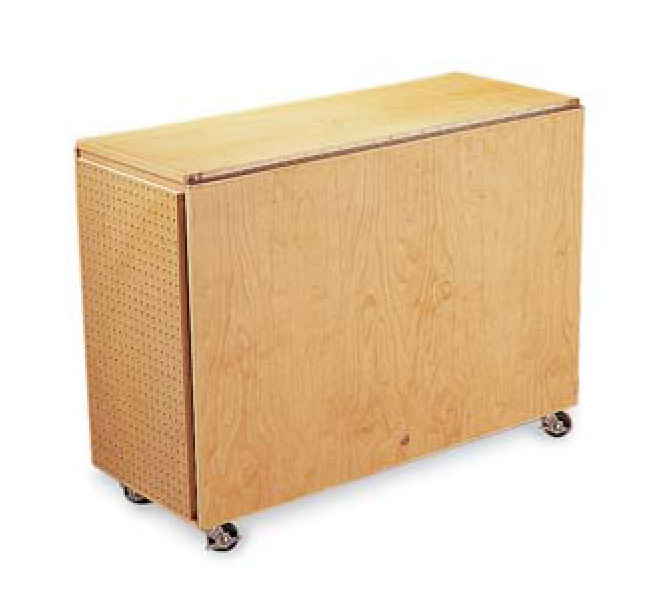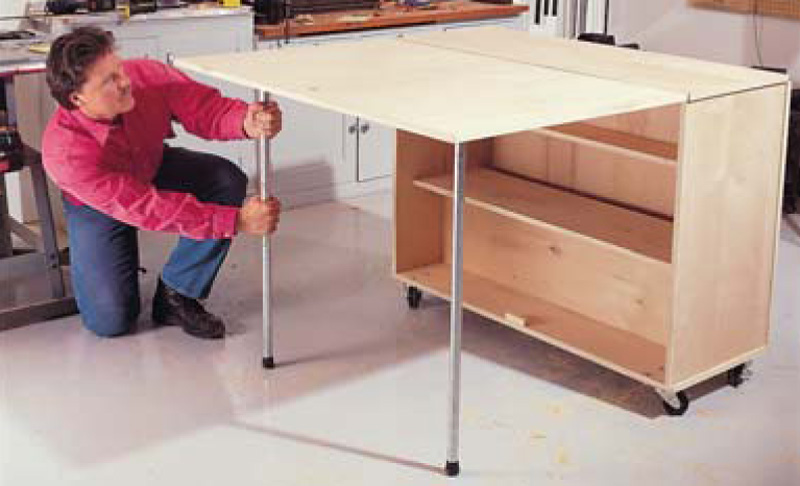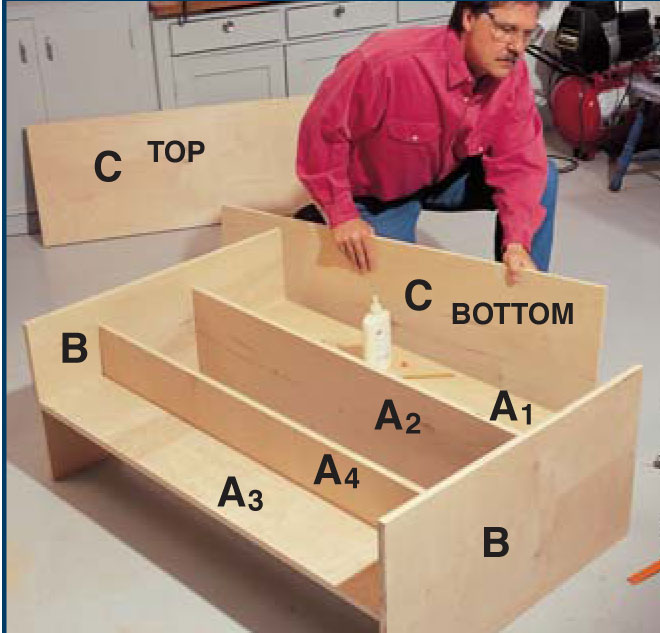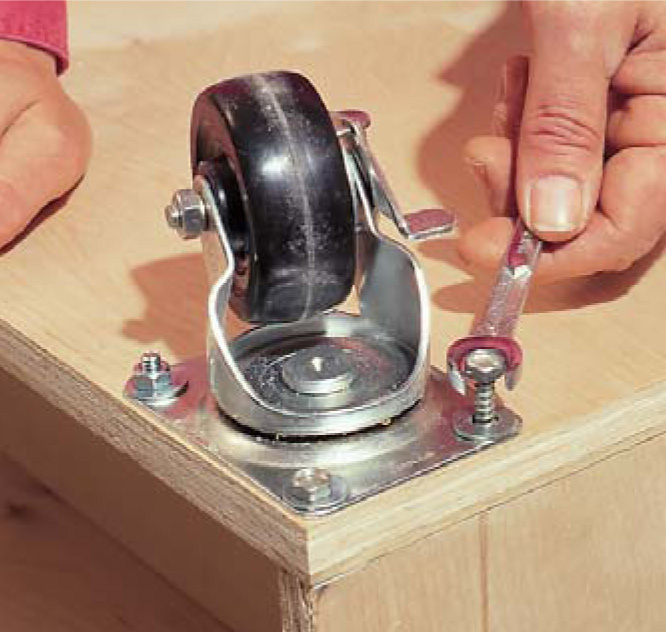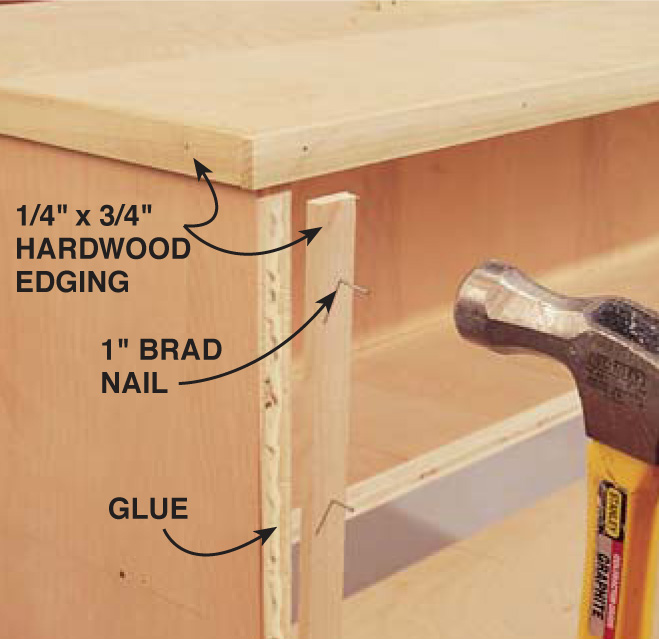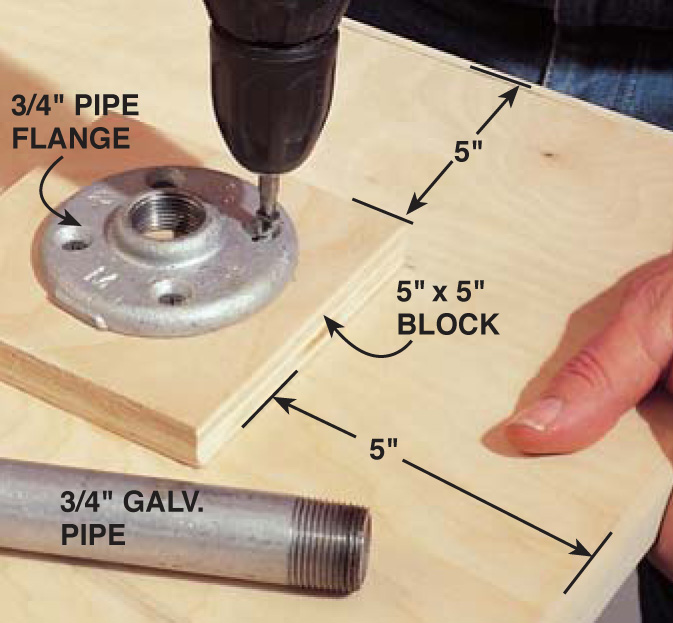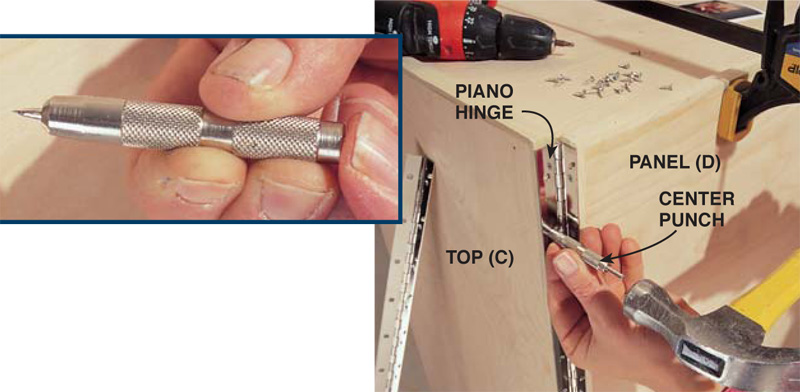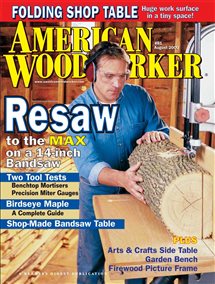We may receive a commission when you use our affiliate links. However, this does not impact our recommendations.
Folding Worktable
This simple, roll-around worktable fits in tight spaces yet expands to a huge work surface.
By David Radtke
| Here’s a work space that’s huge and accessible from all sides, yet folds up and stows away easily. If you don’t have room for a full-size, permanent table for glue-up, assembly and finishing, this worktable is the ticket. It opens to a solid 4-ft. x 7-ft. surface with both side tables up, yet closes and rolls into a small 4-ft. x 18-in. space on 3-in. lockable casters. It’s made from two sheets of 3/4-in. plywood and costs about $120, including hardware.
It’s a perfect work space for the garage or basement and can be used for everything from assembling projects to laying out a baby quilt. Assemble with glue and nailsI used 3/4-in. birch plywood from a home center, but any flat plywood sheet will do. Avoid construction-grade plywood because it often has bows or warps that make precise fitting impossible. Once you cut all the plywood pieces, rip the 1/4-in.-wide edge banding from 3/4-in.-thick boards and set them aside. The thin hardwood edging is a necessary component of the table; without it, the hinge screws won’t hold and the plywood could easily delaminate along the edges. Assemble the upper and lower shelves as shown in Fig. A and Photo 1 with carpenter’s glue and 6d finish nails. The large shelf supports (A1 and A3) on the bottom and top of the shelves keep the table from racking out of square.Glue and nail the sides to the shelf ends, then let the assembly sit for an hour to allow the glue to dry before attaching the casters, as shown in Photo 2. Attaching the hardwood edgingCut to length the edging for the long sides of the top and bottom and the flip-up side tables. Start a few brads into each piece of wood edging, put glue on the plywood and tack each piece into position (Photo 3). Overlap the short pieces and run them a bit long. After you glue and tack them in place, trim them to length with a handsaw. Nail all the edging every 6 in. with brads.When the glue is dry, sand the sharp corners of the edging. The piano hingesLike ’em or not, all those piano hinge screws give continuous support along the joint for a sturdy worktop.Be sure to align one hinge blade with the top (C) and the other with the top of panel D. It’s simple to align the top and side panels if you tip the assembly on its side, as shown in Photo 5.Use a hinge center punch like the one shown or a Vix bit (a special self-centering drill bit), see Sources, page 65. Securely mount the hinges in place with the screws provided. The flanges and clocksGlue and screw the blocks to the underside of each panel (D) to support the 3/4-in. pipe flanges and pipe legs. I bought 3-ft. lengths of pipe, threaded on one side, and found that I needed to cut (with a hacksaw) about 1 in. off the length. This allowed room for the flanges and the rubber feet (available at home centers). The locks serve a dual purpose. First, they keep kids out and second, they keep everything inside from tipping out if the table is jarred. To install them, drill the holes for the lock and glue a wooden catch to the bottom of the shelf, as shown in Fig. A. Measure the shaft of the lock once it’s installed to get the correct thickness for the block.We used a 1/2-in.-thick block for ours. Finish with a urethane varnishRemove the hardware to make painting or varnishing a whole lot easier. Label the panels in a hidden spot so you get the table together again easily. Small variations from one panel to the next can show up on your hinge placement and locks. Sand the entire table with 150-grit sandpaper and use a power sander to knock down any high spots on the hardwood edging. Vacuum the dust,wipe the table down with a tack cloth and apply your finish.We used two coats of oil/varnish (Minwax Antique Oil Finish). Wait a few days after the last coat of finish to let it cure before you put the first scratches on your new worktable.
Cutting List
Shopping List
Fig. A: Exploded View In folded form, it’s a mere 19-1/2-in. deep and 48-1/2-in. long.
Screw-on pipe legs give the flip-up side tables rock-solid support. Unscrewed, they store on one of the interior shelves.
1. Glue and nail the anti-rack shelf supports (A1,A3) to the shelves first, then nail these assemblies to the sides (B). Next, align, glue and nail the top and bottom pieces to the sides.
2. Attach casters while the table is upside down. Align the caster bases with the outer edges of the bottom. Use 1-1/4-in.-long lag screws (drill a 3/16-in. pilot hole) on the outer edge and 1-1/4 in. carriage bolts (drill a 1/4-in. pilot hole) with nuts and washers for the inner fasteners.
3. Glue and nail the 3/4-in. by 1/4-in. hardwood edging to the exposed plywood edges, with the table right-side up.
4. Screw the 3/4-in. pipe flanges onto 5-in. square reinforcing blocks cut from scrap plywood. Glue and screw the blocks to the underside of the front panels, as shown in Fig. A.
5. Attach the flip-up side tables (D) with the table on its side. Align each flip-up side table with the table’s frame so the 1-1/2-in. piano hinge fits, as shown, and clamp in position. Align your screw holes perfectly with a center punch or a Vix bit (see Sources, below). SourcesNote: Product availability and prices are subject to change. Rockler, rockler.com, 800-ROCKLER, keyed-alike cam locks, #98998; Vix bits, #91995. Lee Valley, leevalley.com, 800-871-8158, hinge center punch #23K05.01. This story originally appeared in American Woodworker August 2000, issue #81. Product Recommendations Here are some supplies and tools we find essential in our everyday work around the shop. We may receive a commission from sales referred by our links; however, we have carefully selected these products for their usefulness and quality. Recommended Posts  
|




